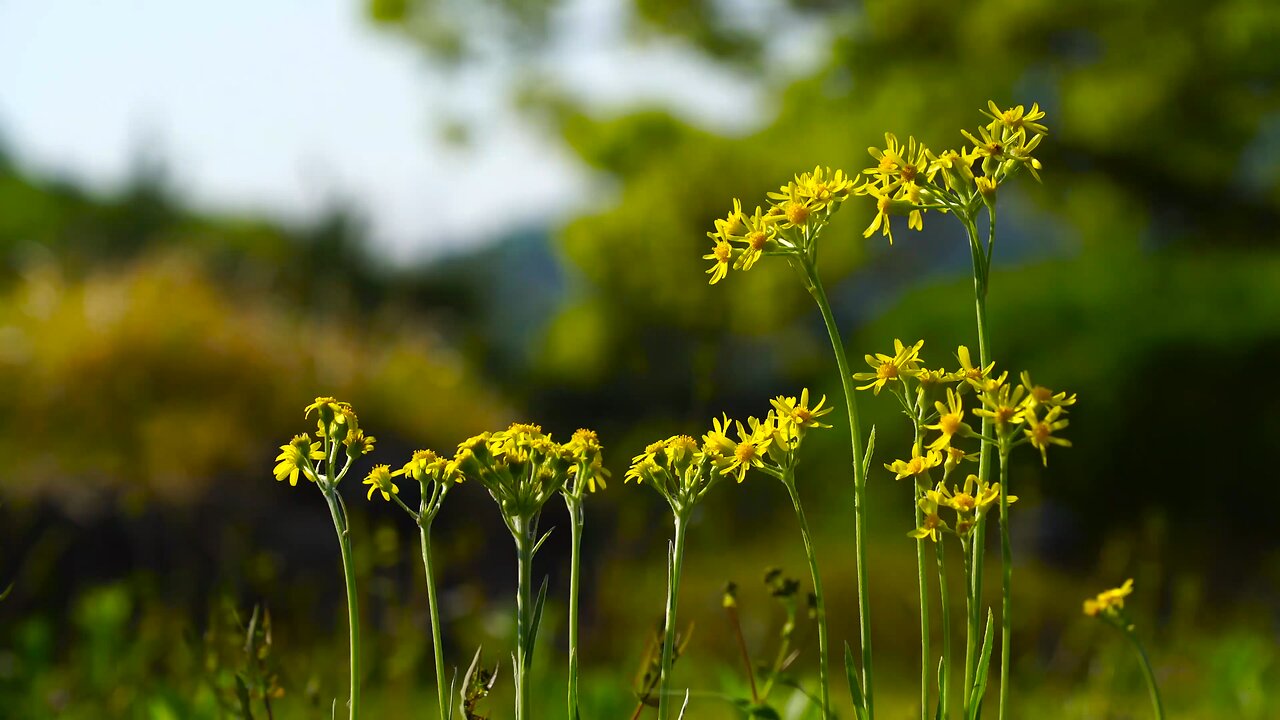Premium Only Content

"Guardians of the Grasslands: Protecting Tephroseris integrifolia and Its Ecosystem"
*Tephroseris integrifolia*, commonly known as the Field Fleawort or Jersey Cudweed, is a herbaceous perennial plant belonging to the Asteraceae family. It is primarily found in Europe, particularly in regions with dry, calcareous soils such as grasslands, open woods, and limestone pavements. Here's a more detailed look at this plant:
### **Botanical Description:**
- **Height:** Typically grows between 10 to 30 cm tall.
- **Leaves:** The leaves are usually lanceolate or oblong, with a greyish-green hue. The basal leaves form a rosette at the plant's base, while the upper leaves are smaller and clasp the stem.
- **Stems:** Erect and covered with woolly hairs, which give the plant a silvery or greyish appearance.
- **Flowers:** The flower heads are bright yellow, often with a diameter of about 2-3 cm. They are borne in loose clusters at the top of the stem. Each flower head is composed of both ray and disc florets, typical of the Asteraceae family.
- **Blooming Period:** The plant typically blooms from late spring to early summer, usually between May and June.
- **Fruits:** The seeds are small, brown, and equipped with a pappus, aiding in wind dispersal.
### **Habitat and Distribution:**
- **Geographic Range:** *Tephroseris integrifolia* is found across Europe, with its range extending from the British Isles and France in the west to the Balkans and western Russia in the east. It is also found in parts of Central Asia.
- **Preferred Habitat:** This species thrives in dry, sunny locations with well-drained, calcareous soils. It is often found in limestone grasslands, rocky outcrops, and open woodlands. It can also inhabit disturbed areas like old quarries.
### **Conservation Status:**
- **Threats:** The plant is considered to be of conservation concern in some regions due to habitat loss, particularly the decline of traditional grazing practices that help maintain its preferred open grassland habitats. In the UK, for example, it is listed as a nationally scarce species.
- **Conservation Efforts:** Efforts to conserve *Tephroseris integrifolia* often involve habitat management, such as the maintenance of grazing regimes or the restoration of limestone grasslands.
### **Ecological Importance:**
- **Pollinators:** *Tephroseris integrifolia* is valuable for pollinators, particularly bees and butterflies, which visit the flowers for nectar and pollen.
- **Associated Species:** The plant is part of a broader community of dry grassland species, which often includes other rare and specialized plants.
### **Cultivation:**
- **Gardening:** While not commonly grown in gardens, *Tephroseris integrifolia* can be cultivated in rock gardens or wildflower meadows, provided that the soil conditions are suitable. It requires a well-drained, alkaline soil and a sunny position.
This plant's delicate beauty and ecological significance make it an interesting subject for both botanists and conservationists.
-
 3:44:06
3:44:06
Rising Rhino
10 hours ago $10.97 earnedWashington Commanders Vs Philadelphia Eagles: NFL NFC Championship LIVE Watch Party
46.2K3 -
 13:00
13:00
Exploring With Nug
5 hours ago $2.53 earnedHe Went To Get A Haircut And Vanished WIthout a Trace!
34.3K1 -
 18:53
18:53
DeVory Darkins
1 day ago $24.07 earnedTrump JUST ENDED Mayor Karen Bass During HEATED Meeting
70.3K207 -
 21:06
21:06
Russell Brand
8 hours agoIT'S COMING
125K340 -
 21:26
21:26
Stephen Gardner
1 day ago🔥What JUST leaked out of Congress must be STOPPED NOW!
127K275 -
 53:25
53:25
tether
11 days agoStability and Freedom in Chaos: The Story of Tether USD₮ | Tether Documentary (USDT)
140K5 -
 56:44
56:44
VSiNLive
2 days agoFollow the Money with Mitch Moss & Pauly Howard | Hour 1
77.8K2 -
 36:50
36:50
Anthony Pompliano
2 days ago $16.44 earnedInvestors Are ALL-IN On Bitcoin
70.9K20 -
 32:19
32:19
SB Mowing
9 days agoA Backyard She’s NEVER Seen – Now Safe for the Kids to Play!
66.2K28 -
![[Day 26] CS Blast bounty baby](https://1a-1791.com/video/fwe2/8a/s8/1/Z/H/j/_/ZHj_w.0kob-small-Day-26-CS-Blast-bounty-baby.jpg) 2:09:11
2:09:11
ggezlol_tv
12 hours ago[Day 26] CS Blast bounty baby
97.2K3